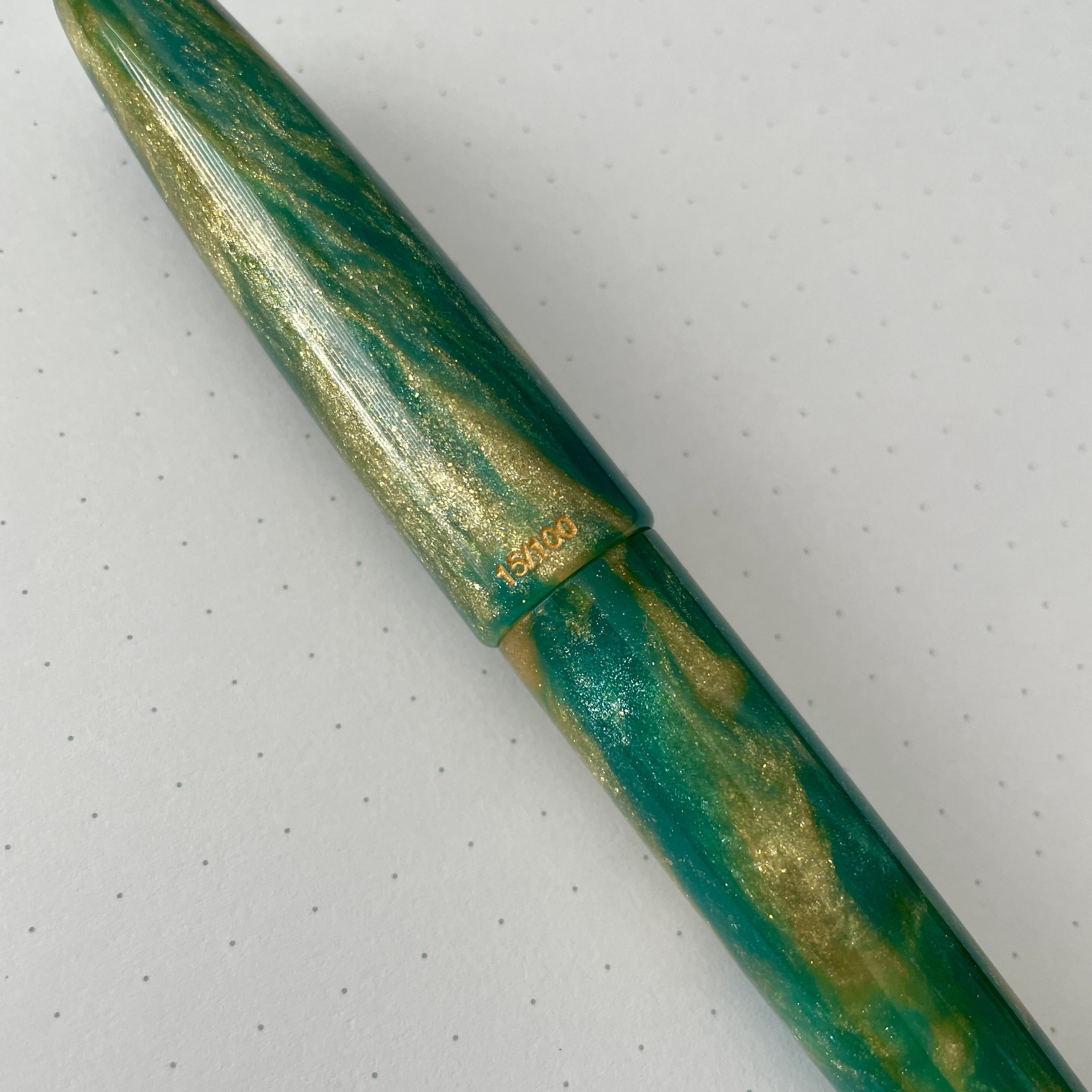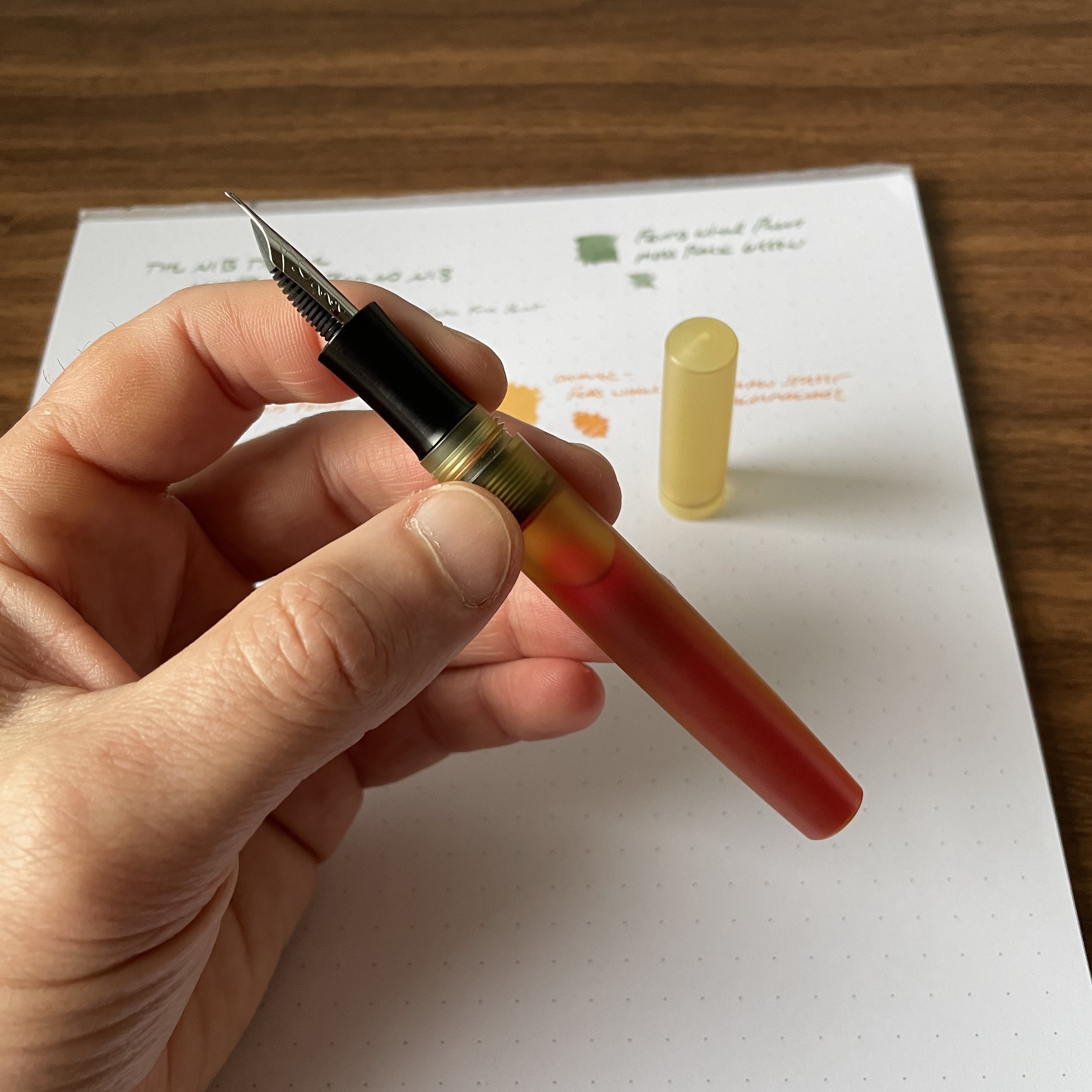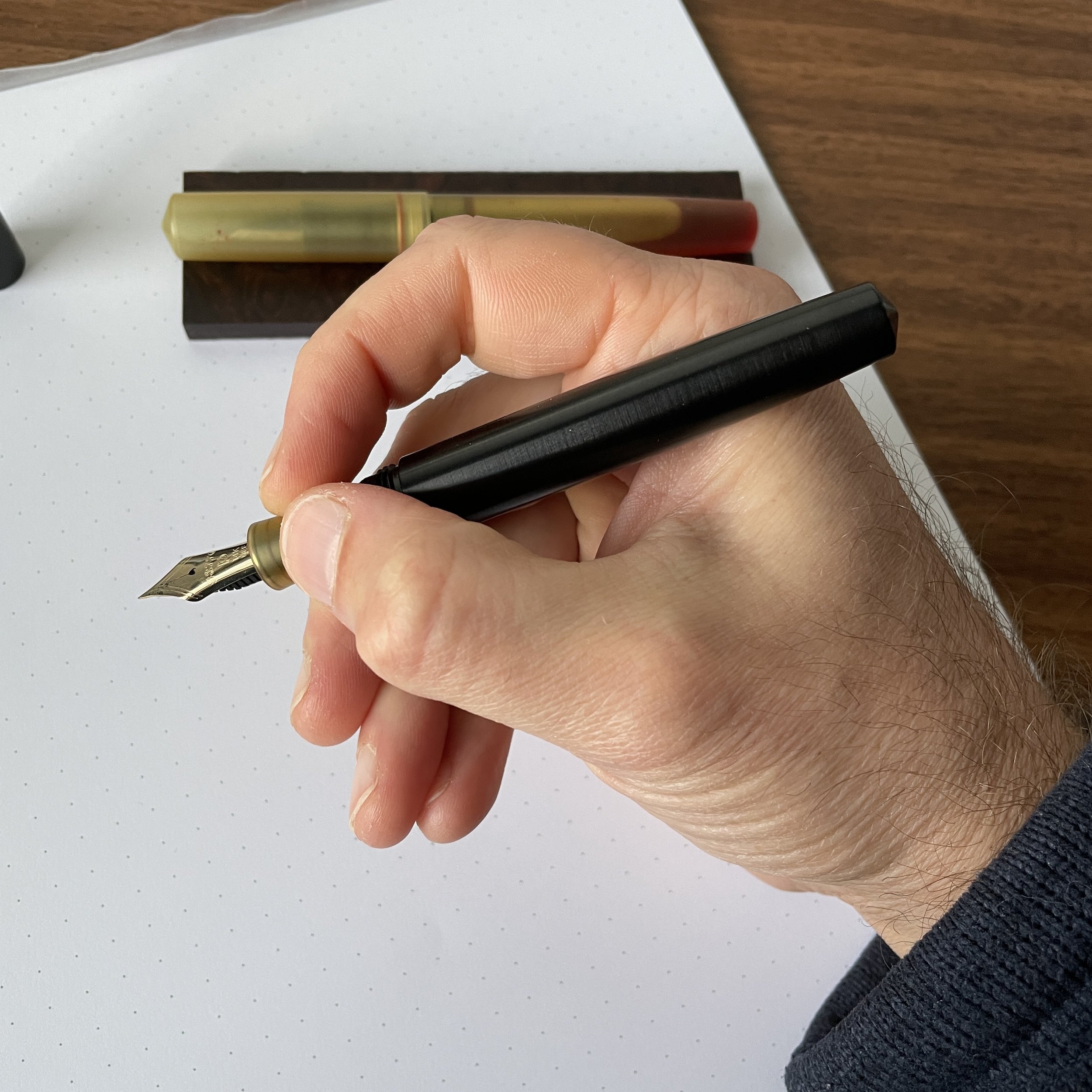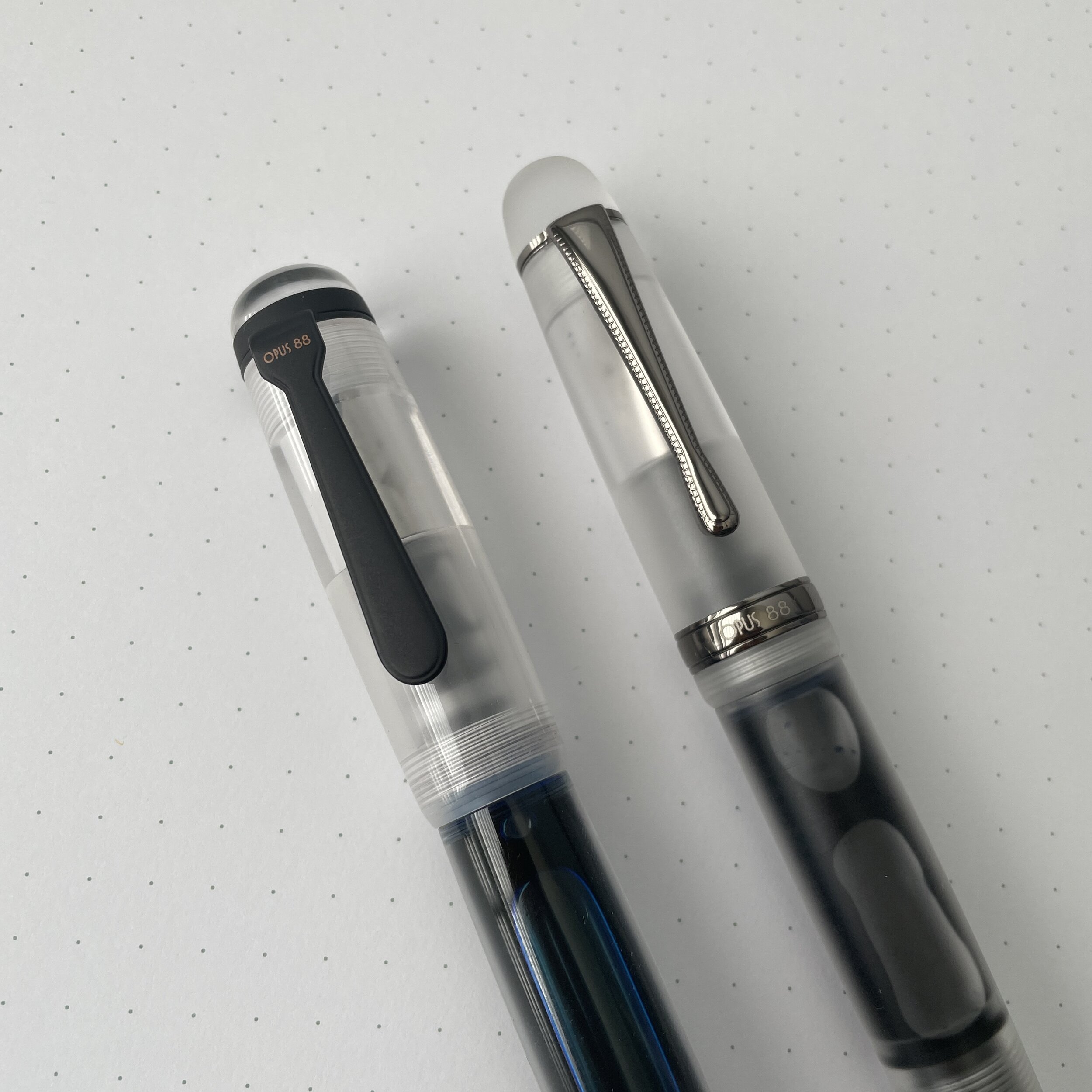One relatively new release that caught my eye at this year’s San Francisco Pen Show was from a brand that had never previously interested me: Pininfarina Segno, a branch of the famed automotive design firm Pininfarina. Over the years, this Italian brand has become known for their quirky modern writing instruments with an industrial or automotive inspiration (which is not surprising given the brand’s origins and association with makers such as Ferrari).
The pen I’m looking at today offers Pininfarina design at a relatively accessible price point. The “PF Two” fountain pen is part of Pininfarina’s “Design Writing” Project, which they describe as a “collection of unique accessories thought to go above and beyond mere utility, where the product’s essential function is just the first step.” In other words, this pen is marketed as a design piece in addition to a solid writing instrument. Of course, whenever you go above the $200 price point, you’re paying for design, but at around $230, you’re not that much higher than the $150-200 price point most manufacturers are targeting these days for their high-end steel nib pens. Those looking for a workhorse pen with a unique look could do much, much worse than considering the PF Two.
The pen’s unique design extends to the packaging: an aluminum sleeve with a padded insert. I’m not sure that I’d reuse the case for everyday carry, but if you store your pens long term in the original packaging, it will hold up and protect your pen.
Build Quality
The PF Two features an anodized aluminum body, in either black or light blue. It has a streamlined shape with flattened, angled ends, reminding me of a more industrial-looking Waterman Carene. The spring-loaded clip is flat, and lies flush with the body of the pen inside a single facet that functions as a roll-stop. the end result is a sleek, modern design that’s adventurous without losing any functionality. Honestly, it’s exactly what I like to see from makers in an industry where it sometimes seems like everything that can be done design-wise has already been attempted, and the focus has shifted solely to reissuing the same pens in different materials. The build quality also impressed me, from the black anodized finish, to the polished clip, to the well-tuned JoWo No. 6 nib. The magnetic cap closes securely and perfectly flush with the barrel.
The clip on the PF Two sits flush with the pen when not extended.
To extend the clip, press down on the finial. Despite its thinness, the clip actually did a fairly good job of holding this heavy pen to the front of a notebook. Given the relative heft of the PF Two, however, i’m not sure how much I’d rely on this clip to secure the pen to a bag or shirt pocket.
Writing Experience
In terms of a writing experience, I have to mention the nib first. In an era where JoWo stainless steel nibs have become the default option for pens under $250, it’s easy to lump these into a single category and bypass any particularized discussion. I won’t do that here, because the nib on this PF Two is one of the smoothest, well-tuned JoWo stainless steel nibs I’ve ever written with, on par with ones I’ve received from Franklin-Christoph (all of which are tuned by hand prior to shipping). Now, Pininfarina describes this nib as a “calibrated nib, which guarantees a long ink life, protecting it from atmospheric pressure and temperature.” I don’t really even know what this means - it’s likely just marketing speak for “we tuned the nib” - but I do have to agree: they did something to it, and whatever their process is, it works.
The PF Two is also very well-balanced. Since you cannot post the pen, this is important, and the pen has just enough heft to make it comfortable. The grip section offers enough texture to prevent your hand from slipping, though keep in mind that there is a rather sharp step from the barrel to the section. Given how I grip the pen, it didn’t pose any issues for me, and in fact I never even noticed it when writing.
Takeaways and Where to Buy
The Pininfarina PF Two is a well-made modern fountain pen that offers famed Pininfarina design at a price point that should be relatively accessible to many pen enthusiasts. I won’t say that this is an “inexpensive” pen at more than $200, but it’s in the same ballpark as the Montegrappa Fortuna, Montegrappa Miya (with the steel nib), and the standard Leonardo Momento Zero and Momento Zero Grande.
The Pininfarina PF Two (second from right) shown here next to, from right, a Waterman Carene, Diplomat Aero, and a Lamy 2000.
You can purchase the Pininfarina PF Two fountain pen from The Pleasure of Writing and other Pininfarina retailers. As I mentioned above, this pen typically retails for a street price of around $230 (with an MSRP of $295). In addition to the fountain pen, ballpoint and rollerball versions are also available. Many thanks to the team at The Pleasure of Writing (formerly Bittner), for loaning me this pen for review purposes. While I need to send this particular pen back following the review, I’m eyeing a light blue version for my own collection at some point in the future.
This post does not contain affiliate links. I was not compensated for this review, and the pen featured here was loaned to me for review purposes. Many thanks to The Pleasure of Writing for making this review possible!















